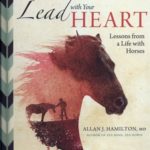In 1901, Jim Thorpe was a lanky 13-year-old who stood just under five feet tall and weighed 102 pounds. In those days on the Great Plains, there was no indication that this Native American boy with a toothy grin would become the world’s greatest athlete. Thorpe’s mother had just died, leaving him and his siblings in the care of his physically powerful father, Hiram, who had built his small ranch by obtaining a few Indian allotment sections in north central Oklahoma over the years. His stock and wild horses roamed 320 acres and the vast unclaimed lands surrounding the Thorpe ranch. Jim had learned to throw a lasso and rope wild horses (or their colts, at least) by the time he was 10.
Hiram would leave Jim and his twin brother, Charles, in charge of feeding the livestock when he shopped for supplies. Sometimes the boys would goof off, and one time they abandoned the animals to go fishing. This set off Hiram’s volcanic temper, and he beat the boys. That very night, Thorpe slipped out and left the Sac and Fox Reservation to look for work, running west to the high Texas Panhandle. He knew how to handle a rope and use a hammer and how to sell the lie that he could break broncs.
There was not enough of him for a horse to respect, so the young Thorpe hammered, strung barbed-wire fences, and dug holes for fence posts for an entire year. Every time he’d attempt to break a horse, he’d get thrown and subsequently fired. Thorpe would find another ranch and start all over again, and slowly he learned how to break horses. Along the way, he saved every penny he earned, and by the time he was 14, Thorpe had saved enough to return home to his dad with a team of horses.
“When I got back to Oklahoma with that team of horses, my father took one look at them and decided to take me back,” Thorpe said in a 1952 interview. The future Olympic great also boasted that by the time he was 15, he had never met a wild horse that he could not catch, saddle, and ride. “This was a great sport, and it made me strong and alert,” he said. Yet when he returned home, the words of advice from a camp cookie echoed in his mind: “Go to school.”
He soon enrolled in Pennsylvania’s Carlisle Indian School, where he met football coach Pop Warner. An outstanding track and field athlete, Thorpe qualified for the U.S. Olympic team and competed in the Summer Games in Stockholm, Sweden in 1912, where he won gold in the decathlon and pentathlon by winning eight of the 15 events. Newspapers declared him “the world’s greatest athlete.” Thorpe went on to play professional football and basketball for six teams (though his early stint in professional baseball led to the controversial stripping of his medals) and, in 1920, was elected as the first president of the National Football League.
Life and sports require getting back up after getting knocked down—a quality Jim Thorpe fostered horseback on wild Texan broncs.







